Security Prison 21 – S21 (Cambodia)
Security Prison 21 started life as Chao Ponhea Yat High School. In August 1975 four months after the Khmer Rouge came to power in Cambodia. The school was converted into a prison, called Security prison 21. It would have the more ominous title of S-21. It was encircled with electrified barbed wire, windows were sealed with steel bars and classrooms were turned into rooms used for interrogation, which usually meant torture.
Over a four year period it is estimated that up to 20,000 people were imprisoned in S-21. At anyone time the prison held as many as 1500 prisoners.
The routine was as follows. A prisoner would be brought to the prison where they were photographed (there are whole rooms with photos of the prisoners).
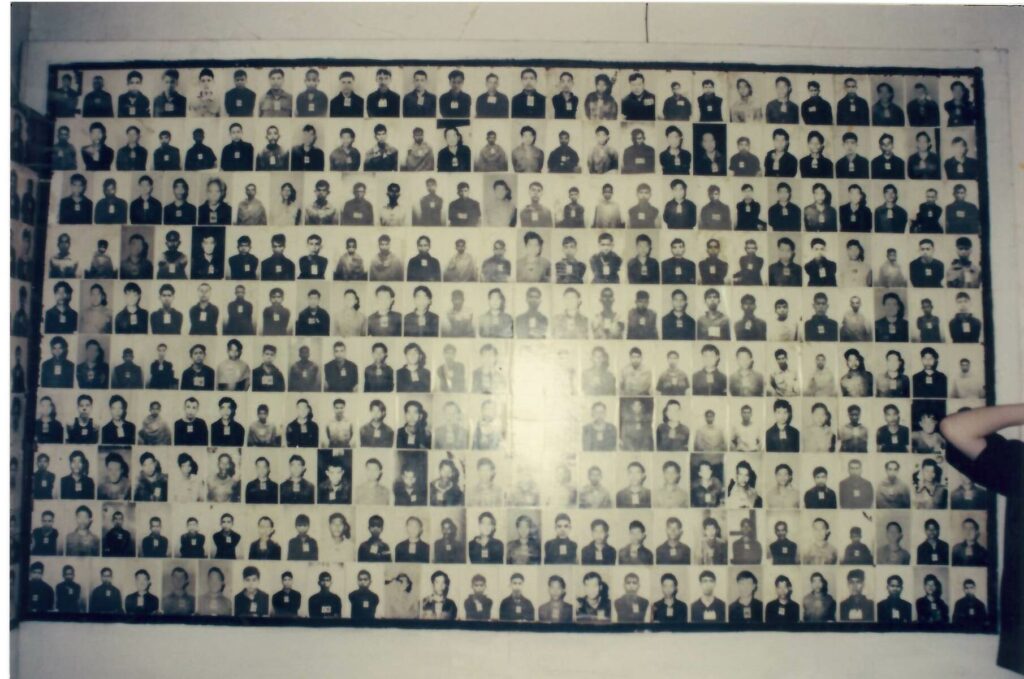
After this they had to give a full description of their life from childhood to the time of their arrest. They were then stripped and all their belongings were confiscated. They were put into cells where they were often shackled together in long pieces of iron bars. At night they were made to sleep with no bedding and no mosquito nets. Anyone who spoke was punished. They would be woken at 4.30 for roll call and guards would check that no one was hiding any sort of instrument that could later be used to commit suicide. The food was meager and consisted of watered down leaf soup and rice porridge. Portions were minimal and anyone trying to drink water without the guards permission would also be punished severely.
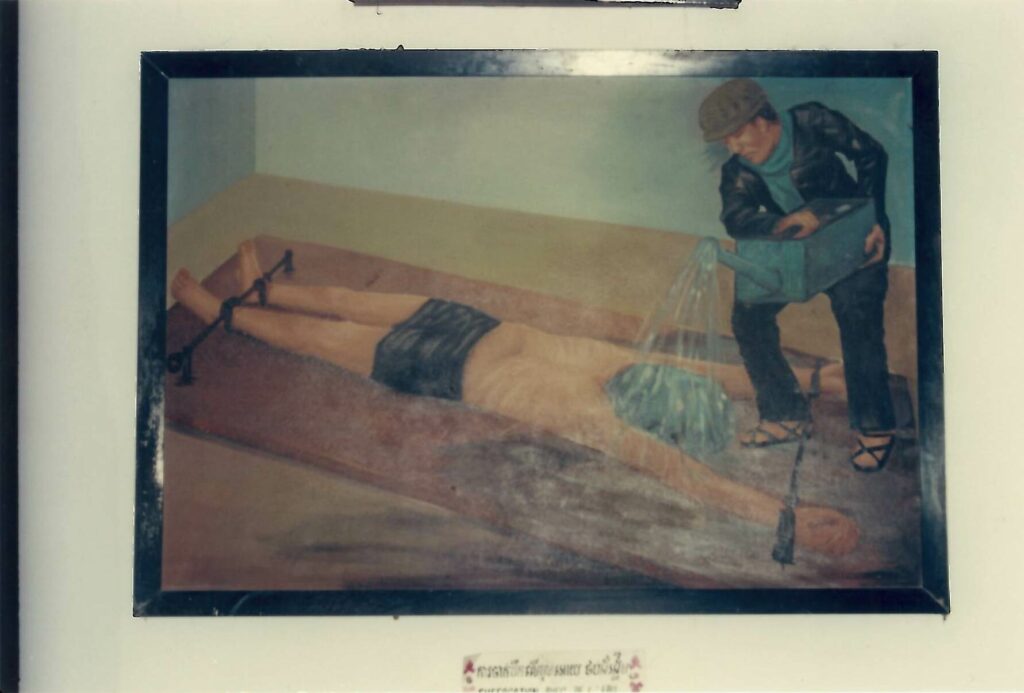
There were barely any trained medical personnel and disease, especially skin diseases, were rampant. The prison had stiff rules. Any disobedience was punishable by torture and the prison used many methods. These included beatings, electric shocks, pulling out fingernails and pouring alcohol on the wounds, searing with hot rods, suffocation with plastic bags, hangings and water bed torture. This torture involved lying a prisoner reclining backwards with a cloth over his face while pouring water over him. This torture was captured in a painting by Vann Nath who was one of the very few survivors of the prison. He was one of only 14 people to do so. Very often female prisoners were raped, although this went against policy. Anyone who was found out was usually executed. The irony of the torture was not that it was intended to kill the prisoners – at least not at the beginning, but rather to extract a confession.If the prisoners later became party members they had to describe their activities. They would then be led, usually be means of torture to describe these activities, which were often against the state.
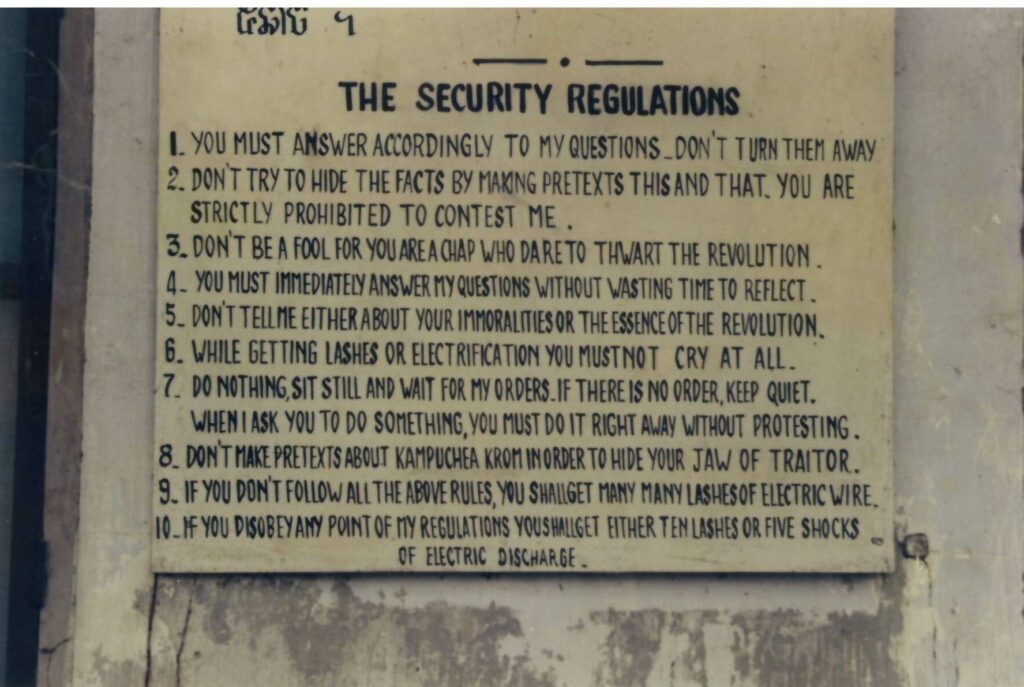
It mattered little to the interrogators if the confessions had any truth to them, their main purpose was to extract more names from the prisoners. These names were usually colleagues, friends and even family members who would in turn be arrested and the whole process would start again. Some confessions ran into thousands of words. The prison was finally liberated by the Vietnamese in 1979.
I can honestly say this was one of the worst places I ever visited! Its easy to find in a central location of Phong Penh
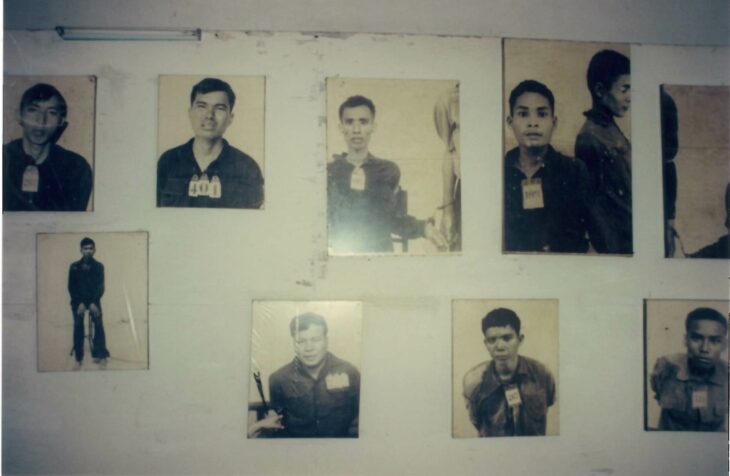
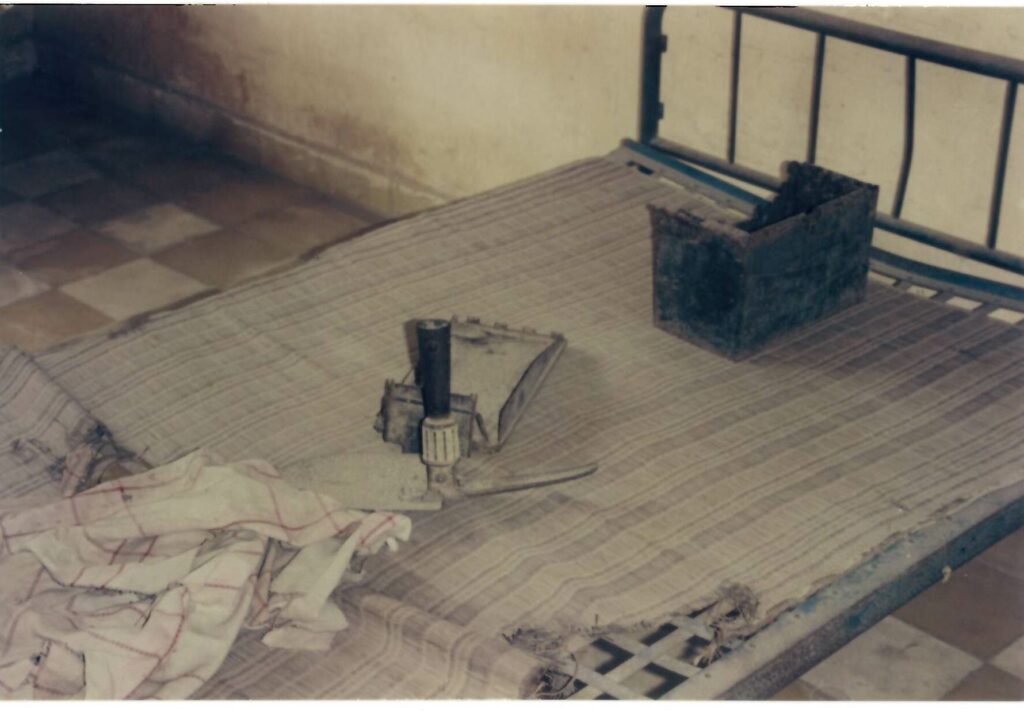
 Tiny Teddy
Tiny Teddy